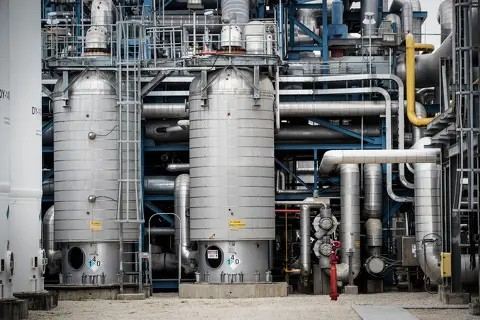| Getting your Trinity Audio player ready... |
The future of Exxon Mobil’s proposed hydrogen project in Baytown is in limbo after the Trump administration unveiled a slew of changes to hydrogen tax credits under its “big, beautiful bill.”
Exxon CEO Darren Woods said on an earnings call that the company has seen “mixed progress” in regards to the development of the project.
Exxon CEO Darren Woods said on an earnings call that the company has seen “mixed progress” in regards to the development of the project.
Advertisement
Article continues below this ad
“As we’ve said, this is a complicated project that requires simultaneous development of supply, demand, and policy. We were disappointed that, under the recently approved 45V tax credit, timing for start of construction was shortened from 2033 to the beginning of 2028,” Woods said.
Under Trump’s “big, beautiful bill,” hydrogen projects must now begin construction by 2028 to meet the criteria for tax credits.
“While our project can meet this timeline, we’re concerned about the development of a broader market, which is critical to transition from government incentives. If we can’t see an eventual path to a market-driven business, we won’t move forward with the project,” Woods said.
Exxon’s Baytown hydrogen project is designed to produce about 1 billion cubic feet of low-carbon hydrogen per day, which could then serve as fuel for Exxon’s Baytown plant or be sold to other companies. The facility is also expected to generate over 1 million tons of ammonia per year.
The project could also help the company support the city of Houston’s efforts to become carbon neutral by 2050. By using hydrogen to fuel its Baytown plant, Exxon anticipates that it could reduce its carbon emissions by up to 30 percent.
Additionally, under their “carbon capture and storage program,” the company would be able to store about 10 million metric tons of carbon dioxide per year, which would be one of the largest storage initiatives globally. The storage plans would support broader industry efforts to turn Houston into a “carbon capture hub,” with several companies aiming to capture and store up to 100 million metric tons of carbon dioxide from power plants and facilities by 2040.




